About the City
Rio de Janeiro
It was the seat of the viceroyalty, became the capital of the colony and became, in the 19th century, the seat of the Kingdom of Portugal and Algarves, with the arrival of the Royal Family. In 1822, with the Independence of Brazil and the inauguration of D. Pedro I as emperor, Rio became the first and only capital of an empire in the Southern Hemisphere.
All this political and economic movement bequeathed to those who visit the city a series of landscapes that are now well known in the Center. Even before the arrival of the Prince Regent, the aqueduct, now known as Arcos da Lapa, the Church of Santa Luzia, the Monastery of São Bento, the City Palace, the Convent of Santo Antônio and the Imperial Palace were already standing. With the arrival of the court and, later, with the arrival of the French cultural missions, the city witnessed the emergence of new buildings and public places that became a must-visit for those who want to follow the historical trajectory of the city: the Botanical Garden, the National Museum ( former residence of the emperor), Candelária, the buildings in neoclassical style in the Center. The entire neoclassical heritage dictated the style of the great buildings after the Proclamation of the Republic, that made Rio the capital of Brazil. In the first decades of the 20th century, the Center remained a meeting point not only for the political and economic classes, but also for its social elite.
Thus, the area underwent major transformations, such as those that opened roads, such as Avenida Rio Branco, with the razing of part of the old Morro do Castelo, and Avenida Presidente Vargas, with the demolition of the houses that proliferated with the evelopment from the port area and railroad branches. In its wake, solid testimonies of an era have become major cultural references, from the Banco do Brasil Cultural Center to the National Museum of Fine Arts, from Casa França Brasil to the Municipal Theater.
The great works also marked the era of post-war governments. Modernism set the tone for monuments such as the Metropolitan Cathedral, on the site of the former Morro de Santo Antôonio, and the Museum of Modern Art, on the Aterro do Flamengo, in the 1950s.
also marked the opening up of other areas of the city, which would come to mark it as a tourist destination: the appearance of Copacabana and Ipanema, previously isolated by the hills that dot the city, and the erection of two icons, the Pão de Açúcar cable car and the Statue of Christ the Redeemer, which would contribute with the most emotional title that a destination could receive in the world: The Marvelous City.
Tourist Attractions
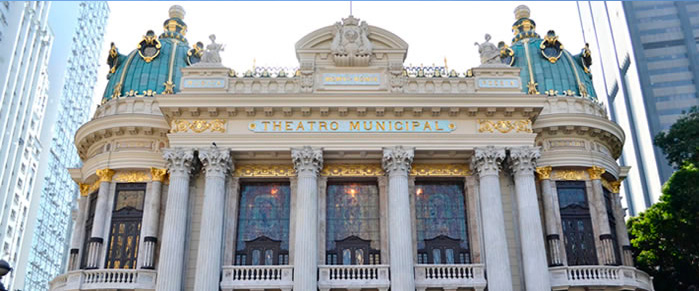
municipal theater
Design and construction by A. Guilbert and Francisco de Oliveira Passos. Its inauguration took place on July 14, 1909.
Lapa Arches
Located in Largo da Lapa, where Rio's nightlife was concentrated in the past, the Arcos da Lapa remain the main monument of colonial Rio.
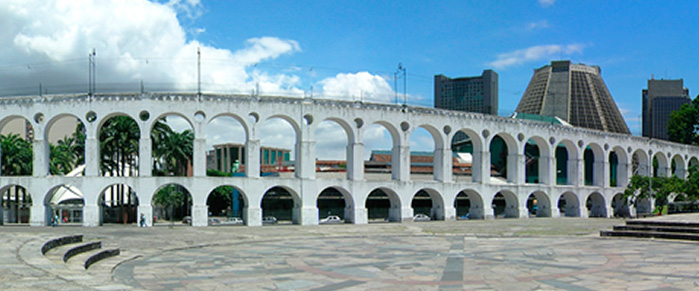

Corcovado – Christ the Redeemer
Corcovado Mountain, with the image of Christ the Redeemer on its top, is one of the main symbols of the city.
Tijuca Forest
Located in the middle of the densely populated area of the city of Rio de Janeiro, Tijuca National Park is the largest urban forest in the world.

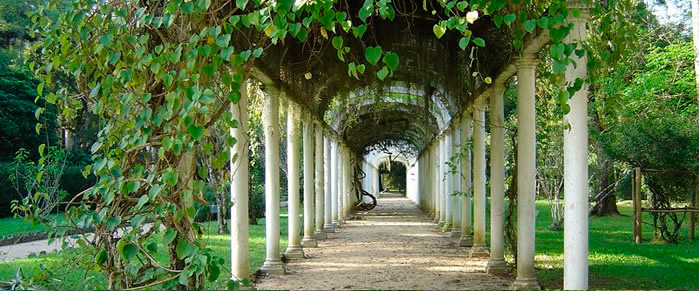
Botanical Garden
The Botanical Garden has an immense green area of ??1.4 million square meters where around five thousand species of tropical plants and trees are cultivated.
Maracanã
Maracanã has already been the setting for the most important classics in Brazilian football and has hosted historic moments in international football.

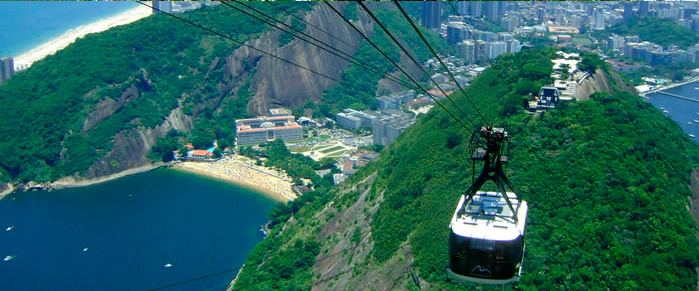
Pão de Açúcar
One of the main sights of Rio de Janeiro can be seen right at the entrance to Guanabara Bay.
The History of the City
Sinuous, insinuating, beautiful and intriguing, the landscape of Rio de Janeiro has already enchanted visitors to its coasts for 5 centuries.
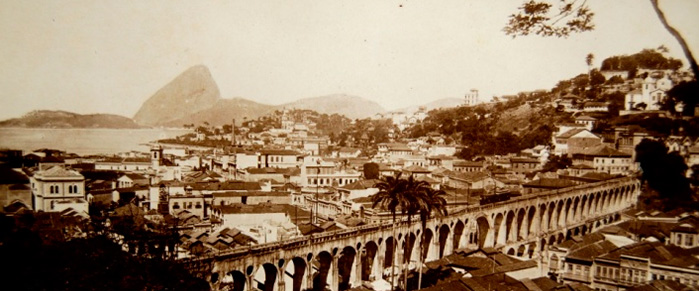
Useful information
Tom Jobim International Airport, located on Ilha do Governador, is easily accessible via modern expressways, to the city center and the South Zone, where the main hotels are located. Twenty-six international airlines and all Brazilian airlines operate at the airport, which in 1998 recorded a movement of approximately 8 million passengers between domestic and international flights.
Santos Dumont Airport, located in the center of the city, operates regional flights connecting the main capitals in the country, executive jets and smaller aircraft. An excellent taxi and bus service links the airports with the main hotels and residential areas.
Rio de Janeiro International Airport – Galeão – Antonio Carlos Jobim:
Tel – information: +55(21) 3398-5050
Flights: +55(21) 3398-4527 / 3398-4526
Domestic Airport- Santos Dumont:
information and flights +55(21) 3814-7070
BRT (Bus Rapid Transit)
You can take the BRT (Bus Rapid Transit) from RIOgaleão - Tom Jobim International Airport to the South Zone and Barra da Tijuca, where the Congress will be held. The service is affordable, with tickets available for purchase at the station or through the RioCard MAIS (LEARN MORE). It’s a fast and cost-effective way to reach the Congress venue!
UBER
Alternatively, you can use Uber's services for a more convenient and personalized ride to the South Zone and Barra da Tijuca. The app provides a quick and easy way to arrange transportation, making it a great choice for those who prefer a direct and comfortable trip to the Congress venue
BUSINESS HOURS
Most offices are open from 09:00 to 18:00 from Monday to Friday and from 09:00 to 13:00 on Saturdays. Most large shopping centers, such as Rio Sul and Barrashopping, are open from Monday to Saturday from 10:00 am to 10:00 pm and on Sundays from 3:00 pm to 9:00 pm. Rio has several convenience stores open 24 hours a day. Banks are open from Monday to Friday from 10:00 am to 4:00 pm.
Climate
Rio de Janeiro is the city of Rio de Janeiro. a subtropical city. Summer stretches from December to March with temperatures ranging from 25°C (77°F) to 42°C (108°F); winter runs from June to August, with temperatures around 20°C (68°F) during the day and 16°C (60°F) in winter. night.
Clothing
Sports dress predominates in Rio. Few places in Rio require formal attire. For men, casual pants and a shirt are sufficient; for women casual wear. A light sweater is recommended. enough for winter nights.
Communications
The city has an excellent communications system that connects Rio to the rest of Brazil and the world. Direct and collect dialing can be done from any phone. Portable cell phones can be rented at low cost by visitors. The Direct Dial code for Rio de Janeiro is: 21.
Electric current
The electric current in Rio de Janeiro is high. 110 or 120 volts. Many hotels and buildings have alternative outlets for 220 volts.
Policing
The Military Police of the State of Rio de Janeiro has a battalion – BPTUR – Specialized in ostensive patrolling of the city of Rio for tourist protection. Duly trained and equipped to respond to police incidents with tourists, the police officers of this corporation are in charge of patrolling tourist spots, beaches and areas close to hotels.
BPTUR – Police Battalion in Tourist Areas
Address: Rua São Clemente, 345 Botafogo
22260-001 Rio de Janeiro -RJ
Tel: (21) 3399-7565 / 69
(21) 3399-7457 call center
(21) 3399-7562 intelligence service
Fax: (21) 3399-7450
The Tourist Assistance Office – DEAT – a specialized branch of the Civil Police, it is made up of a delegate, detectives, investigators and scriveners responsible for investigating and recording any occurrences. DEAT has its own headquarters conveniently located in Leblon across from Teatro Casa Grande and close to Scala. A police station was instituted and police officers specifically trained to deal with foreign visitors.
Tourist Service Station – DEAT
Address: Av. Afrónio de Mello Franco, s/nº – Leblon
22430-060 Rio de Janeiro – Brazil
Tel: +55(21) 2511-5112 / 3399-7170
Fax: +55(21) 3399-7172
16 DP - Police Station
Praça Desembargador Araújo Jorge, s/n - Barra da Tijuca, Rio de Janeiro - RJ, 22611-220.
Telefones: +55 (21) 2333-6364 / 2333-6305
Plantão Hospital Lourenço Jorge: +55 (21) 2333-6307
Hotels
Currently, the City of Rio de Janeiro has more than 500 hotels, including those from 01 to 05 stars, inns, hostels and apart-hotels that offer more than 33,000 rooms.
Taxis
Rio has a large fleet of taxis, almost all equipped with air conditioning. Ordinary taxis, identified by the color yellow, circulate through the streets with a taximeter. Special taxis operated by licensed companies serve airports and hotels or can be ordered by telephone. At airports and main shopping malls, most special taxis work with fixed rates per area, which can be paid in advance at the company's counter, where the price list must be posted.
Tips
Hotels: Hotels often include service charges in their bills.
Restaurants: Tips are optional, but are often found at the end of the bill as a “suggestion”. In Rio, you usually pay 10%.
Taxis: Taxi drivers do not require a tip, although most passengers will round up the fare when they are in the area. Satisfied with the service.
Porters at hotel and airport: R$3.00 per bag.
Trolleys to carry bags at the airport: free
Culture
Rio de Janeiro has an intense cultural life, offering more than 200 venues for cinema, theater, musicals and artistic exhibitions, more than 50 museums and 87 libraries. In addition to the traditional museums, the city is home to museums dedicated to trains, planes, trams, jewels and precious stones, sports, Indians, Brazilian primitive art and even art. Carmem Miranda, among others.
Holidays
In Rio de Janeiro and Brazil there are There are a number of public holidays throughout the year. These are:
1º January – New Year
January 20th – São Sebastião – Patron Saint of the city of Rio de Janeiro (Rio only)
Mobile – Carnival
Mobile – Passion of Christ and Easter
April 21 – Tiradentes – Martyr of Independence
April 23 – São Jorge
1º May – Labor Day
Mobile – Corpus Christ
September 7th – Independence Day
October 12th – Our Lady of Aparecida – Patroness of Brazil
November 2nd – deceased
November 15th – Proclamation of the Republic
November 20th – Zumbi dos Palmares – Black Consciousness Day
December 25th – Christmas
Source: Visit Rio






